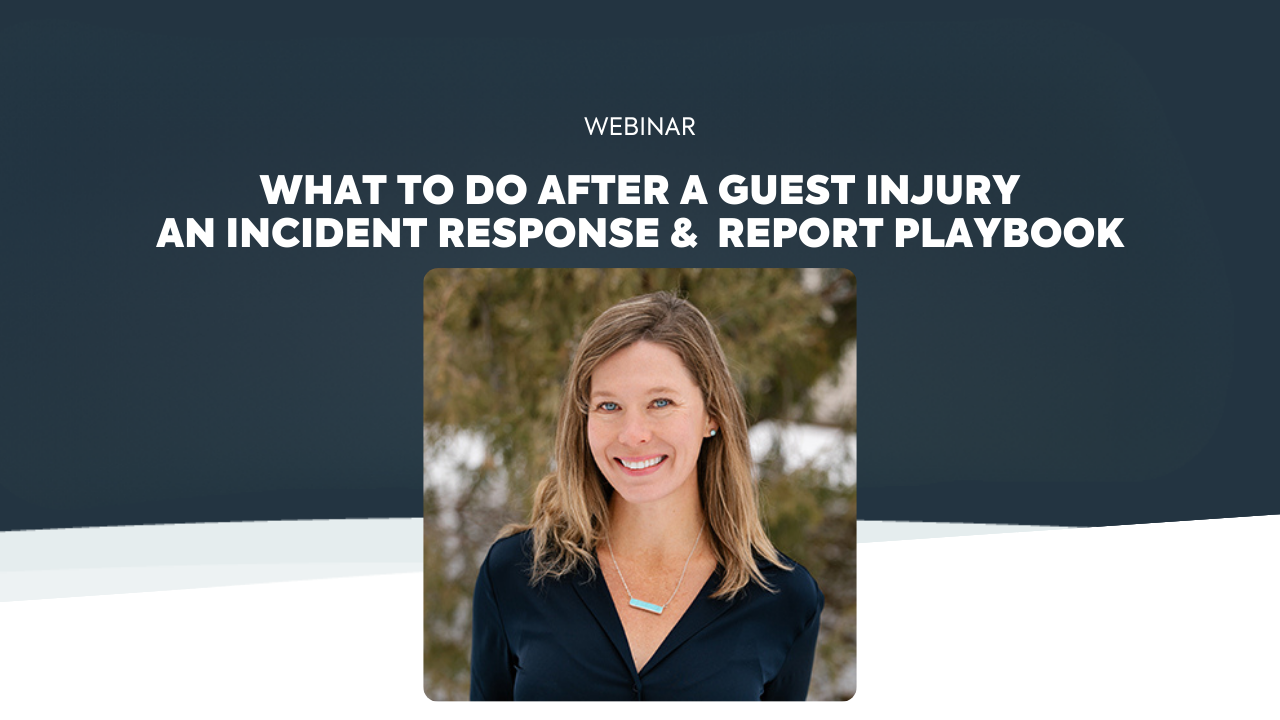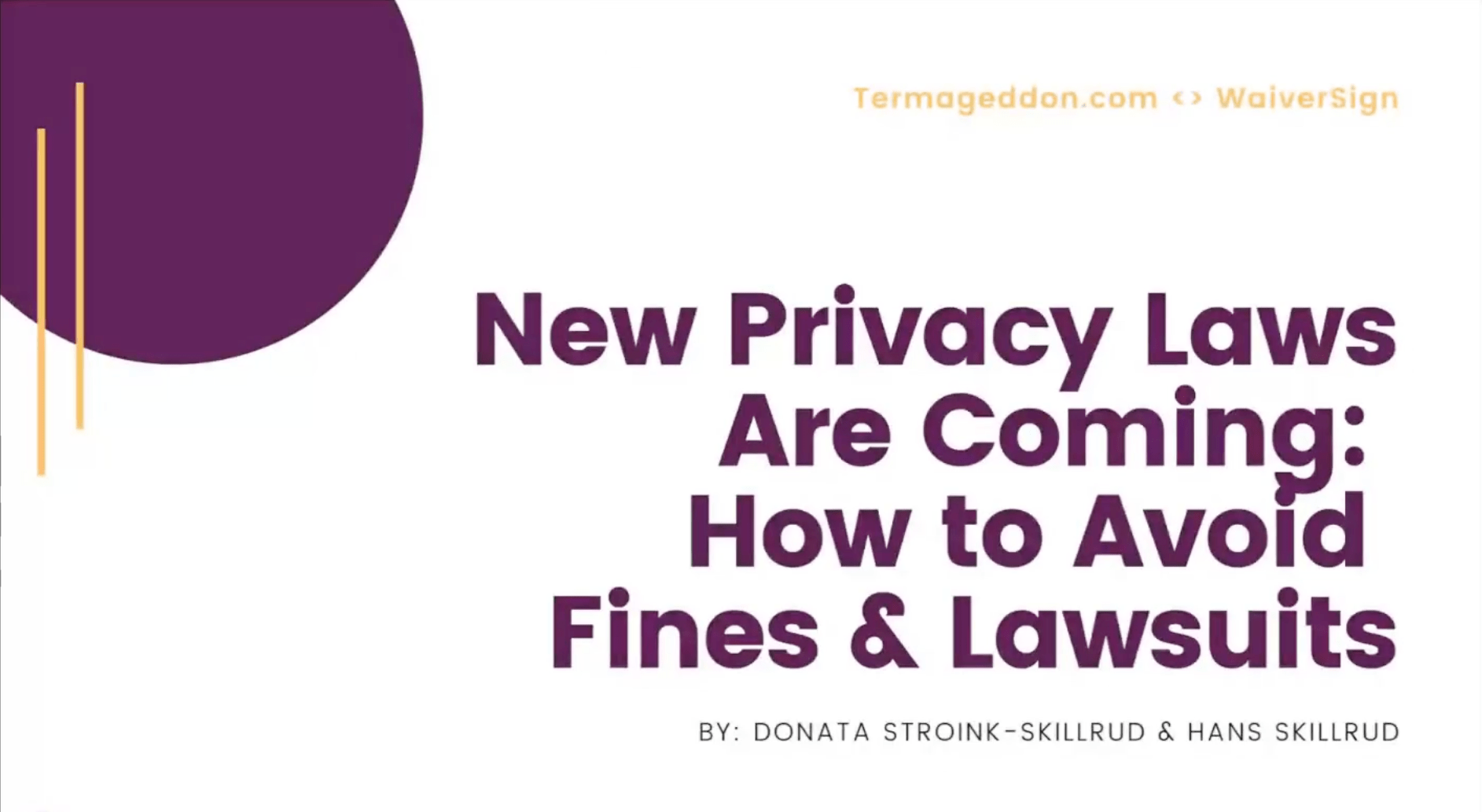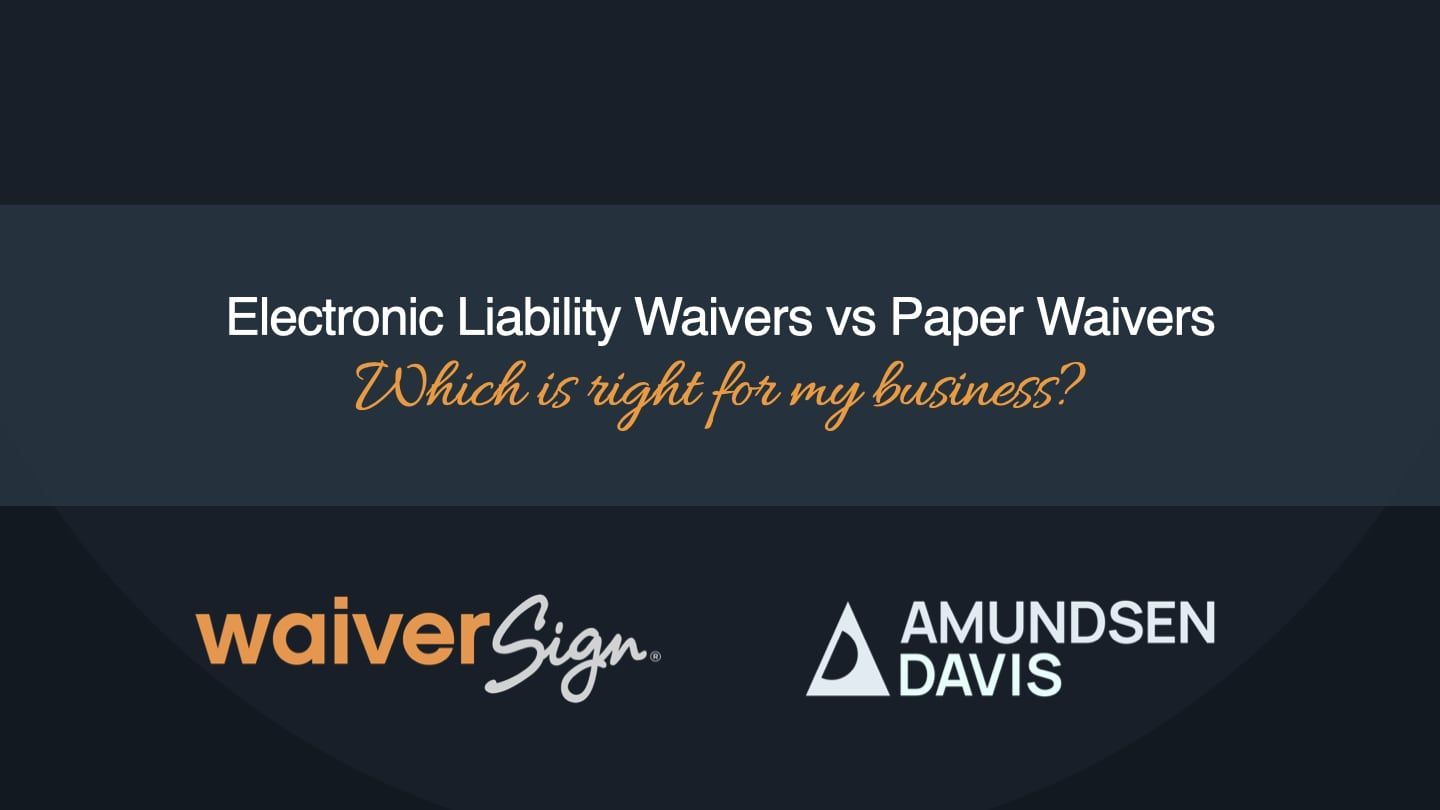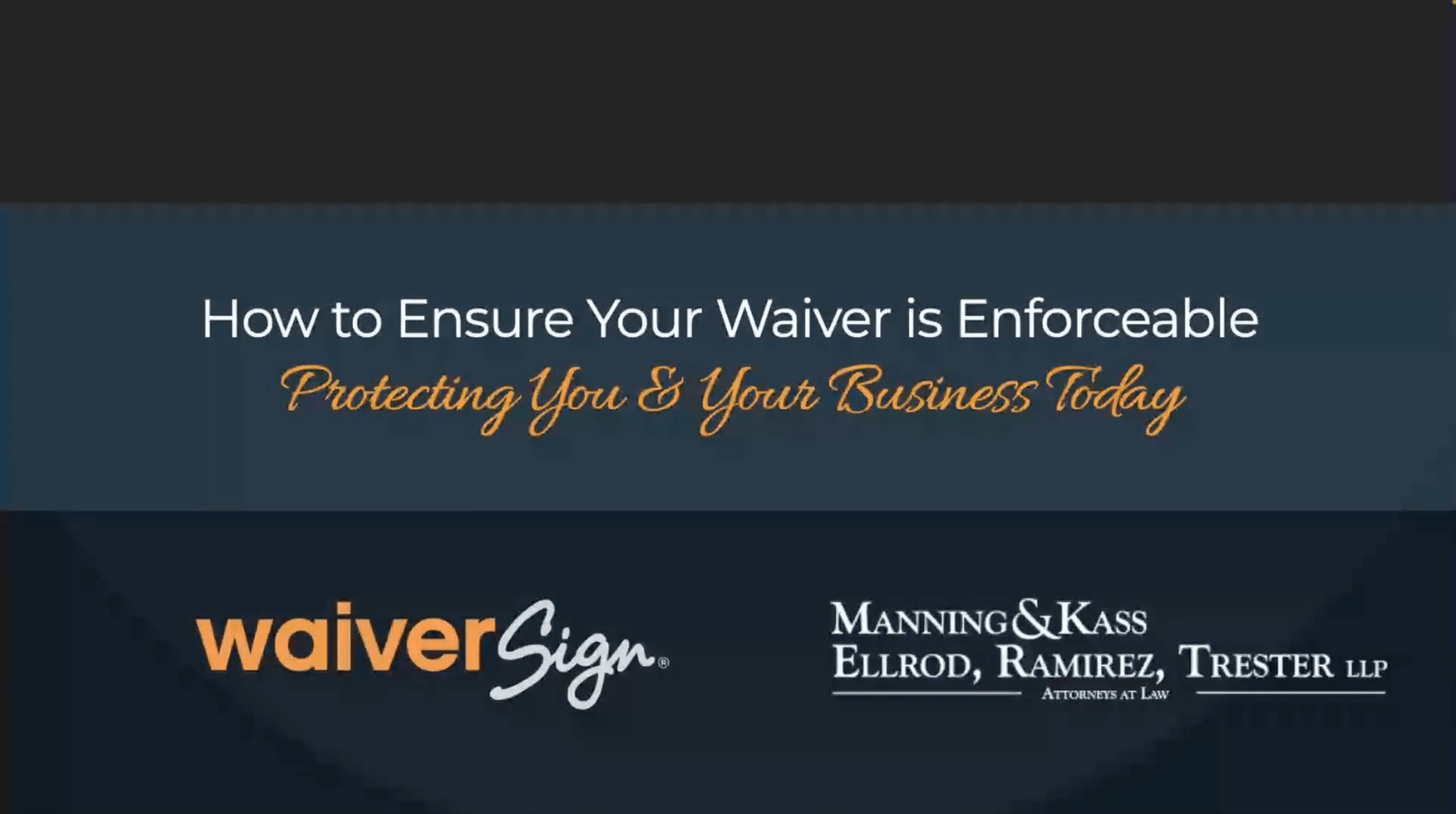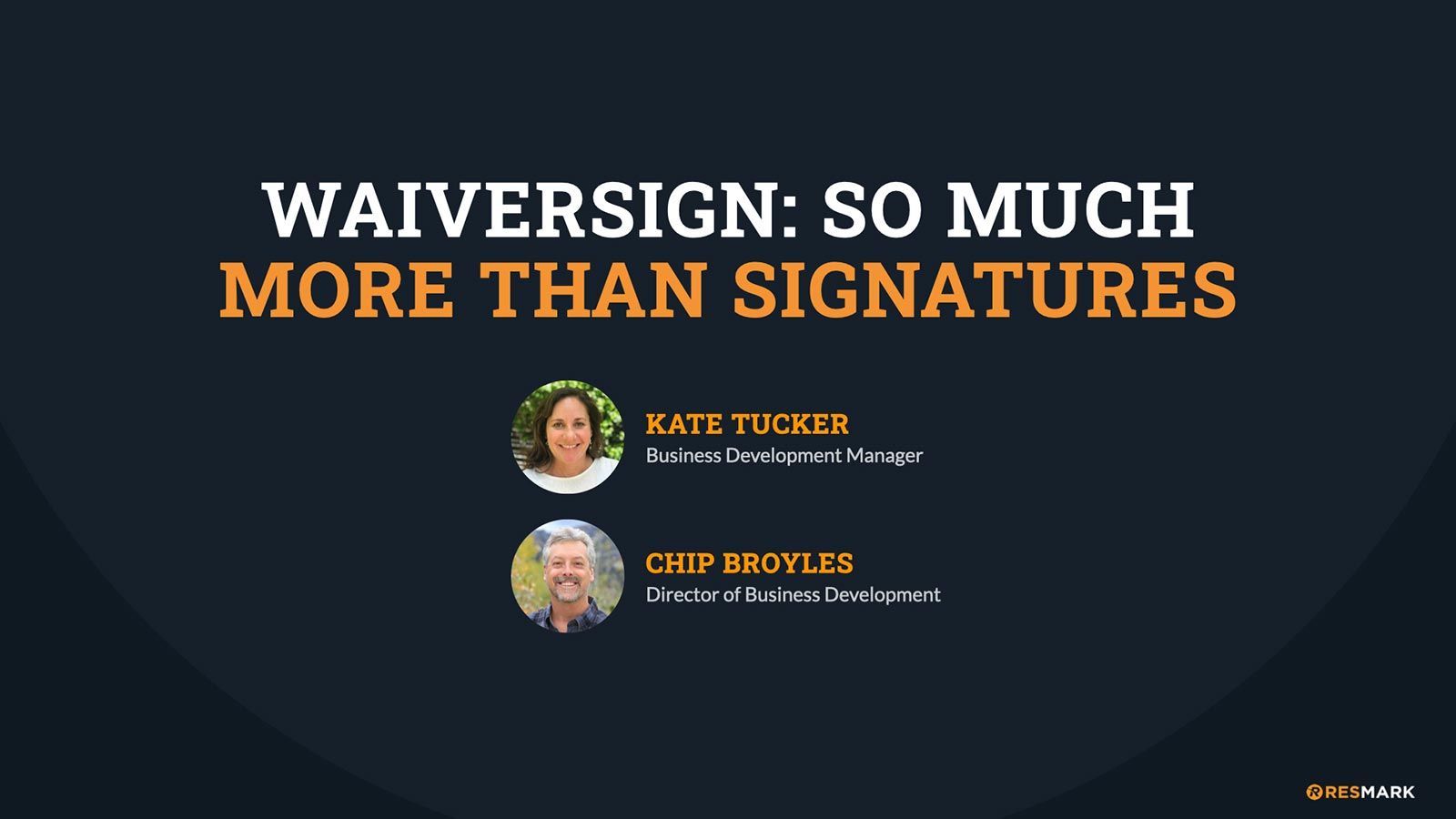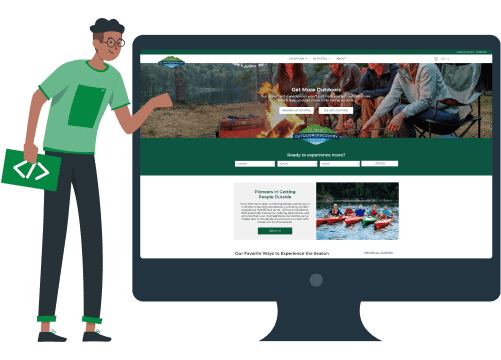Incident Response Walkthrough
Webinar Replay
Watch the replay to learn:
✅ What to do immediately after a guest injury—before lawyers get involved
✅ How to document incidents the right way to protect your business
✅ Why your waiver can be a legal asset (if used correctly)

Would you know what to do if a guest got injured today?
When an incident strikes—a guest injury, safety mishap, or even a legal threat—the clock starts ticking. What you do next can make or break your business. Having an incident response plan in place and knowing how to document an injury incident report properly could be the difference between smooth resolution and a legal nightmare.
In this exclusive webinar hosted by WaiverSign and
Recreation Law Group, you’ll get a practical, step-by-step plan to respond the right way—both legally and operationally. Whether you’re a guide, business owner, or risk manager, you’ll walk away with insights into incident response best practices and how to prepare for the unexpected.
What You’ll Learn:
- The Critical First 24 Hours: What to do immediately after an incident—before lawyers or insurers get involved.
- Avoiding Legal Landmines: What courts and attorneys actually care about (and what they don’t).
- Digital Waivers as a Legal Asset: How your waiver system can strengthen your case and safeguard your reputation.
- Documentation That Defends You: Smart, proactive ways to record what happened—without making it worse.
What to Do After a Guest Injury: An Incident Response & Report Playbook
When a guest is injured, your response can either protect your business or expose it to serious risk. That’s why this webinar replay, “What to Do After a Guest Injury: An Incident Response & Report Playbook,” is a must-watch for tour operators, activity providers, fitness studios, and adventure brands of all kinds.
This summary walks you through the most important takeaways from the session, including how to manage an injury scene, create and use an injury incident report, and build an incident response plan that sets your business up for long-term protection and success.
Why Every Business Needs a Response Playbook
“Incidents don’t just test your safety protocols. They test your professionalism and your preparedness,” said outdoor industry attorney Leah Corrigan during the session.
Having a well-documented incident response plan provides legal protection, reinforces trust with guests, and ensures your team knows exactly what to do. It also makes your business more defensible in the eyes of insurers and regulators.
Quote to remember:
“Failing to plan is planning to fail. An incident response plan isn’t optional. It’s insurance for your reputation.” — Leah Corrigan
What to Do First After a Guest Injury
The first minutes after an injury are crucial. Leah outlined the immediate priorities every business should follow:
- Provide medical care. Ensure the guest receives help right away. If needed, call for emergency responders.
- Secure the area. Prevent further injuries by stopping the activity or redirecting others away from the scene.
- Assign a response leader. Choose one trained staff member to manage the situation. Too many people trying to lead can create confusion.
This is not the time to improvise. A plan, combined with real training, removes hesitation and keeps your team focused.
The Power of Documenting Injury Incidents
When it comes to legal protection, your documentation is your shield. That starts with completing an injury incident report immediately.
Your injury incident report template should include:
- Date, time, and location
- Names of those involved
- The specific activity taking place
- A detailed, factual account of what happened
- Immediate actions taken
- Names of witnesses
Avoid guessing or including opinions. Just the facts.
“If it’s not written down, it didn’t happen.” — Leah Corrigan
Photos of the scene and preserved equipment (if relevant) can also support your report. These small steps can make a big difference if a claim arises later.
If you're currently using a generic form or outdated process, now is the time to evaluate your tools. Here's why waiver templates may not be the safest option and how an online waiver system like WaiverSign can give you better flexibility, control, and protection.
Navigating Refusals of Care
Leah addressed a common scenario: what happens if a guest declines help after an incident?
Her advice: use a waiver or incident injury report form that documents the guest’s refusal. This shows that your staff offered assistance and the guest, if an adult, chose to continue without aid. This form should be signed on the spot, whenever possible.
This protects your business by showing you acted responsibly — even if the guest chooses otherwise.
Legal Tips for Partnerships and Waivers
Many businesses collaborate with others to co-host events or excursions. Leah strongly recommended having clear contracts that outline shared liability, insurance coverage, and waiver agreements in these partnerships.
For example, if another company wants to be listed on your waiver or included in your documentation, make sure your digital waiver system, like WaiverSign, can support that level of customization. Whether you're adding partners, vendors, or co-hosts, clarity in your agreements is key — both in your waiver language and in your contracts.
If you're refining your waiver terms to accommodate these relationships, here’s a helpful guide on how to write a liability waiver that walks through essential components and best practices. This ties directly into your incident response best practices.
When your documents are clear, customized, and easy to manage, you're less likely to face confusion or disputes if something goes wrong.
The Importance of Specific Risk Disclosure
Generic language in your waivers is not enough. Leah explained that specificity builds legal strength and helps protect your business in the event of a claim. For example, instead of vaguely stating “risk of injury,” clearly outline the actual hazards tied to your activity — like flash floods, rockfalls, equipment failure, or animal encounters. This not only informs guests but strengthens their contractual assumption of risk, which can be a critical factor in legal proceedings.
“More specificity is better. It helps juries think, ‘This person knew what they were getting into.’” — Leah Corrigan
It’s also important to understand what your waiver can and can’t protect you from. This article on whether someone can sue after signing a waiver breaks that down and offers helpful context for managing expectations and reinforcing your overall risk strategy.
A well-written incident response plan template should include guidance for how your staff communicates these risks upfront and how your waiver language should evolve as your offerings or environment change.
Clear Communication After an Injury Incident
Staff should respond with empathy and professionalism, but avoid making statements about responsibility. Do not say your business will cover expenses or imply fault.
Instead:
- Reassure the guest with care and calmness
- Use factual language only
- Refer additional questions to a designated manager or your insurance carrier
This protects your team from making costly verbal errors and keeps the focus on guest safety.
Training and Tools for Staff
Even the best incident response plan will fall flat if your team hasn’t been trained. Leah emphasized three must-haves for staff preparation:
- Annual scenario training. Run drills with real-life examples.
- Clear role assignments. Make sure everyone knows who does what.
- Accessible checklists. Keep printed or digital guides in vehicles, field packs, or activity kits.
Your team also needs to understand their own rights and responsibilities, especially in high-risk environments. Here’s what business owners should know about liability waivers for employees, including how those differ from guest waivers and what limitations exist. Being incident and injury free starts with readiness, not just good luck.
Review and Improve
Once the situation is resolved:
- File your incident injury report form
- Notify your insurance provider
- Review the incident with your team
- Update procedures if needed
That review process should also include your waiver language. Are your waivers still aligned with your current operations and risk levels? This list of liability waiver best practices can help you evaluate where updates may be needed.
Each incident is a learning opportunity. Save documentation for at least seven years, especially when minors are involved.
A Professional Response Builds Long-Term Trust
Incidents are a reality in the activity and adventure industry. But how you respond can set your business apart. A professional, prompt, and compassionate approach not only minimizes liability — it turns a crisis into a moment of trust-building.
When you have a reliable incident response plan, trained staff, and the right tools in place, you're not just reacting. You're leading with confidence.
How can business owners better prepare for guest injuries before they happen?
Preparation starts with a proactive mindset. Create a written response plan, train your staff regularly using real-world scenarios, and make sure everyone knows their role during an emergency. Stock basic medical supplies and ensure your team is equipped to act quickly and responsibly. Don’t forget your legal documents — this guide to liability waiver best practices can help you strengthen your forms before an incident occurs.
How can business owners better prepare for guest injuries before they happen?
A consistent response ensures your guests receive the same level of care no matter who is on duty. It also reduces liability, strengthens legal defensibility, and promotes a culture of professionalism. Inconsistencies can create confusion and lead to legal or reputational risks.
How can business owners better prepare for guest injuries before they happen?
Waiting too long to document what happened, failing to inform insurance providers, and making off-the-cuff statements about fault are frequent missteps. Staying composed, sticking to the facts, and following a predefined plan will help mitigate these risks.
How can a professional incident response boost customer trust?
Guests don’t just remember the activity — they remember how they were treated when something went wrong. A calm, caring, and confident response shows that your team is responsible and reliable. This builds long-term trust and can turn a bad moment into a loyalty-building one.
What training should be included in an incident response program?
Include hands-on roleplay, communication training, and walkthroughs of your reporting process. Everyone from new hires to senior staff should know how to assist an injured guest and what steps to take afterward. Refresh training regularly to keep procedures top of mind.
Can technology improve how we manage and report incidents?
Yes. Digital tools like mobile forms, cloud-based logs, and integrated digital waiver platforms streamline reporting, reduce errors, and provide easy access to historical data. These tools also allow for quicker internal reviews and stronger legal documentation.
What should happen after the incident is over?
Conduct a team debrief to review how the situation was handled. Update any documentation, notify insurance if needed, and identify what worked and what didn’t. This reflection phase is critical for continuous improvement and keeping your response plan relevant.

Leah K. Corrigan
Leah Corrigan is the founder and managing attorney at Recreation Law Group. With over a decade of litigation experience in state, federal, and appellate courts, she has handled complex cases including wrongful death and multi-million-dollar claims. She holds an AV Preeminent rating from Martindale-Hubbell for her ethical standards and legal expertise.
Leah provides responsive, cost-effective legal support for recreation businesses, serving as a trusted advisor committed to helping adventure thrive. She earned her law degree from the University of Montana and holds a degree in Natural Resource Policy from Fort Lewis College. Leah clerked for the Montana Supreme Court and U.S. District Court and is admitted to practice in Arizona, Colorado, Wyoming, Montana, and Idaho.
A former wilderness guide herself, Leah connects deeply with her clients. She is certified in Wilderness First Response, Swiftwater Rescue, and Avalanche Level II, and spends her free time exploring trails and rivers with her family.

